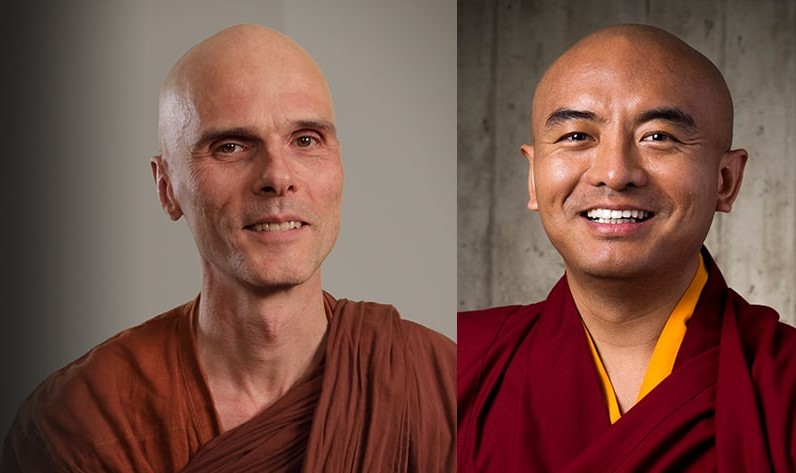Recently, I noticed a high-profile ecumenical dialogue between Vajrayana superstar teacher Mingyur Rinpoche and German-born scholar Bhikkhu Analayo, who currently leads the Agama Research Group. This conversation, Abiding in Emptiness, is produced by the Wisdom Academy of Wisdom Publications in partnership with Tergar International. It is significant for bringing together two different Vehicles to explore affinities between doctrines far removed in time. Below is such a conversation excerpt between Mingyur Rinpoche and Ven. Analayo.
While it has ancient antecedents, Mahamudra emerges as a coherent doctrine in the various tantras of the 7th century in India, while in Tibet it is the mahasiddhas of the 8th to 12th centuries that began the lineages. Yet is there an pre-sectarian, ancient equivalent of the “beyond mind” state in Mahamudra? There actually is, and the earliest strata of Theravada suttas and Chinese agamas hint that just a couple of centuries removed from the Buddha’s death, different Brahmin sects and schools that called themselves Buddhist vied for who directly knew the ground of the cosmos, “that which is prior to thought itself” (purvacitta). Those religious figures that knew the truth of that which is prior to even thought itself had the authority to crown the king (the ritual of this highest of honours was the Ashvamedha, the horse sacrifice).
Of course, I doubt Ven. Analayo will be comparing purvacitta with Mahamudra, but selflessness, signlessness, and emptiness are embedded deep in the Pali Canon. No tradition has a monopoly on that which was prior to thought. This is the perfect grounds for ecumenical dialogue.


